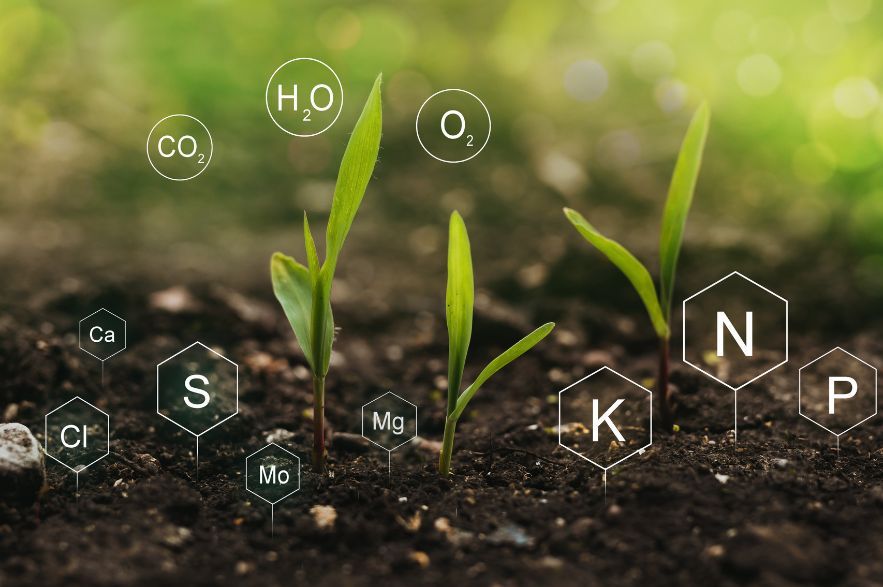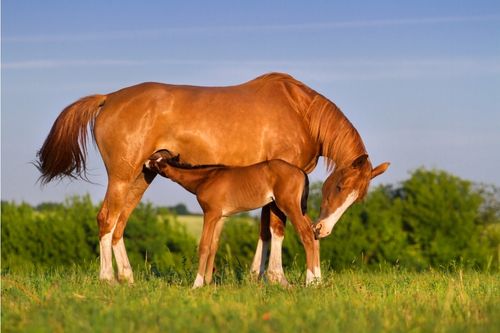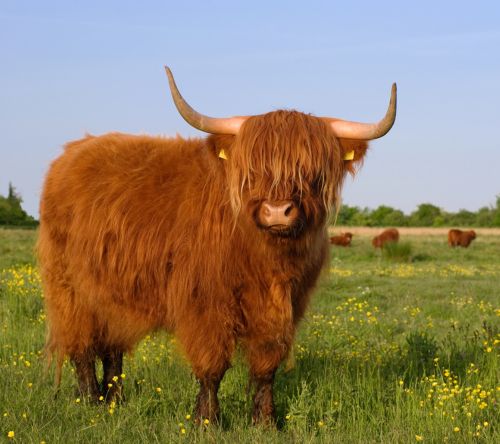By Will Black, Agronomist
Our climate and soil conditions present an array of challenges and opportunities for local farmers. Understanding the roles of soil pH, essential macro elements and key micro-nutrients in soil, plants, and grazing animals is crucial to optimising agricultural productivity in the region.
When it comes to managing soil fertility, there are four important aspects that are key to maximising plant and animal production:
- Optimise soil pH first
- Understand which macro-nutrients drive your production system
- Don’t forget the little things – molybdenum
- Get smart when it comes to nitrogen application
Step 1 – Optimise soil pH first
Soil pH is a measure of the acidity or alkalinity of the soil, which significantly impacts nutrient availability, microbial activity, and plant growth.
Typically, our soils are acidic in nature (pH<7), strongly influencing farming practices and crop and pasture selection. In acidic conditions, macro-nutrients like phosphorus, sulphur, and potassium, and micro-nutrients like molybdenum become less available to plants. Additionally, elements like aluminium and manganese can become more soluble, often reaching levels toxic to plants when pH levels fall below pH 5.0 (CaCl2).
Based on a recent meta-analysis collated from of soil test data from the area over the last five years, 47% of paddocks tested were found to have a soil pH <5.0 (CaCl2). At these pH levels, as well as dealing with reduced availability of key macro and micro-nutrients, other impacts may include:
- reduced rooting depth of pastures
- reduced microbial activity and legume nodulation failure
- difficulty establishing some pasture varieties like phalaris
- thinning of clover content
- increasing presence of weeds like dandelion and sorrel
Soil acidity is managed through the application of agricultural lime to raise soil pH, together with the use of tolerant pasture species such as ryegrass, cocksfoot, and chicory in situations where subsoil acidity exits.
Ideally lime should be applied prior to renewing a permanent pasture.
Step 2 – Understand which macro-elements drive production
Phosphorus (P)
Phosphorus is essential for plant growth and is typically the most limiting macro-nutrient in our region, based on a meta-analysis of data collated from soil tests over the last five years from our region.
This means the soil in these paddocks is unable to provide the nutrition required for the pasture to meet 95% of its productive potential. Depending on the severity of the deficiency, production losses of greater than 50% with respect to pasture dry matter production can occur.
Long-term studies consistently demonstrate that optimum soil phosphorus levels lead to higher pasture growth, a greater proportion of more desirable species, higher nutritive values of the forage available, and improved persistence of sown legumes and perennials.
This improved feed-base consistently led to:
- increased stocking rates while maintaining or improving stock condition
- higher reproductive performance
- improved growth rates in growing stock
- reduced mortality in breeding animals and lambs
In soil: Phosphorus is vital for energy transfer and is often bound tightly to soil particles, making it less available to plants in soil types prevalent across the region. Phosphorus has very low mobility in soil.
In plants: Phosphorus plays a critical role in energy transfer, photosynthesis, and respiration.
Phosphorus is moderately mobile in plants. While it can be moved to new growth areas, the mobility is limited compared to nitrogen. Deficiency often affects older leaves, but symptoms can be less distinct and slower to develop.
In grazing animals: It is crucial for bone formation and energy metabolism. Low phosphorus intake can affect bone development and fertility. While animals maintain tight homeostasis of blood phosphorus, deficiency affects bone mineralization and can lead to weaker bones and other related health issues.
Applying phosphorus
Phosphorus generally stays close to where it is placed in the soil, with little lost to leaching or other degradation processes.
For this reason, it is possible to develop a phosphorus budget that aims to meet the needs of the current crop or pasture and allow for capital applications of additional phosphorus to raise the level of available phosphorus to optimum levels over a defined period of years.
Sulphur (S)
Sulphur is an essential macronutrient. While our regions soils generally have good natural fertility, sulfur deficiency is increasingly common due to the increasing use of high analysis fertilisers that contain only small amounts of sulfur, and the increasing adoption of reduced tillage practices resulting in less Sulphur being mineralised from organic matter.
Based on a meta-analysis of data collated from soil tests results over the past five years in the region, 65% of paddocks were found to be deficient in available sulphur.
In soil: 70-90% of soil sulphur is present in organic matter. Available sulphur (SO4^2-), the form absorbed by plants, is soluble and can leach from the soil, like nitrate nitrogen. Sulphur availability can be limited under cooler conditions during the season.
In plants: Sulphur is a constituent of protein and is necessary for the development of chloroplasts and in photosynthesis. Sulphur is moderately mobile in plants. While it can be translocated, deficiency symptoms often appear in younger leaves first, indicating limited mobility compared to nitrogen.
In grazing animals: Important for protein synthesis and rumen microbial activity. Sulphur is a key component of some amino acids and is well-regulated in the body. Deficiencies are uncommon but can affect wool and meat production in sheep and cattle.
Applying sulphur
Responses to sulphur are most likely to occur under the following conditions:
- soils low in organic matter
- lighter textured soils where leaching may occur
- under reduced tillage conditions
- particularly in pasture production systems without a history of single superphosphate use
- high nitrogen inputs systems
Sulphur is not normally applied on its own. Sulphur it typically applied either with nitrogen based (sulphate of ammonia) or phosphorus based (single superphosphate) blends, with grass-based pastures using sulphate of ammonia based blends and legume-based pastures using single superphosphate-based blends.
Potassium (K)
Potassium is one of three major nutrients required for plant growth.
Potassium is required in larger amounts than any other of the mineral elements except nitrogen.
The incidence of potassium deficiency is increasing in our region. This can largely be attributed to increasing pasture yields and certain soils becoming depleted in potassium through insufficient potassium being applied, particularly in intensive rotationally grazed systems, and systems where hay/silage is regularly produced.
Based on a meta-analysis of data collated soil tests results over the past five years in the region, 41% of paddocks were found to be deficient in potassium
In soil: Potassium is quite abundant in soils and exists in both available and fixed forms in soil. About 98% of total soil potassium is fixed within the crystal lattice of primary and secondary clay minerals. Only a small fraction of total potassium is plant available at a given point in time.
Potassium mobility is moderate. It doesn’t bind tightly to soil particles like phosphorus, but it’s not as soluble as nitrogen. It can be leached in sandy soils or soils with low cation exchange capacity.
In plants: Potassium regulates opening and closing of stomata, enzyme activation, and is vital for protein synthesis. Symptoms of deficiency include yellowing and scorching at leaf edges. Potassium is quite mobile within plants. Deficiency symptoms (like edge scorching on leaves) usually appear on older growth first as it is translocated to newer growth.
In mixed pastures, grasses can out-compete legumes in taking up potassium due to their finer root system. Where soil potassium is low, this may result in loss of legume content from the pasture.
In grazing animals: Potassium is Important for nerve function, muscle activity, and fluid balance. Deficiency can lead to reduced feed intake, weight loss, and general weakness. Animals typically maintain potassium levels in a narrow range, with excesses excreted via urine. Deficiency is rare but can occur in certain dietary conditions.
Applying potassium
Plants generally adsorb most of their potassium in the early growth stages.
In extensive pasture systems potassium is usually broadcast as a single application at the start of the growing season. In more intensive production systems, potassium applications may be split into several applications and applied in combination with nitrogen throughout the growing season. This avoids luxury uptake and improves nutrient utilisation.
The most commonly used potassium fertilisers are muriate of potash (MOP), sulphate of potash (SOP) and potassium nitrate. MOP is the most concentrated, cost effective and widely used potassium fertiliser.
Step 3 – Don’t forget the little things – Molybdenum (Mo)
Of all the micro-nutrients required for plant growth, molybdenum is required in the smallest amount by plants. Molybdenum deficiency is widespread on acid soils across our region. Grasses are relatively tolerant of low molybdenum conditions, but it is of particular concern in legume-based pastures.
In Soil: Molybdenum availability in soil is strongly pH dependent. On the acidic soils in our region molybdenum deficiency can often be an issue. Molybdate is quite strongly sorbed or attached to clay particles or organic matter in soils. Therefore, it not readily leached when compared to nitrate nitrogen or chloride.
In Plants: Molybdenum is essential for plants, albeit in very small amounts. It is a component of enzymes involved in nitrogen fixation and nitrate reduction, and therefore crucial for protein synthesis in plants. Deficiency symptoms include pale leaves and stunted growth, similar to nitrogen deficiency, as molybdenum is involved in nitrogen utilisation.
In grazing animals: While animals require only trace amounts of molybdenum, it plays a role in enzyme systems related to metabolism. Animals generally acquire sufficient molybdenum from plants. Deficiency is rare but can lead to impaired metabolism and growth.
Applying molybdenum
The first step to addressing molybdenum deficiency is lime to acidic soils and thereby increase molybdenum availability. In severe deficiency cases, molybdenum fertilisers may be used. Molybdenum is required in minute amounts and typical application rates of 50 g/ha Mo in legume pastures can remain effective for several years.
Superphosphate is the most commonly used fertiliser on legume pasture in Australia, so adding molybdenum to it is a convenient way to apply molybdenum. Recommended rates for soil application of molybdenum (Mo) in pasture vary and are typically in the range of 50 to 100 g/ha Mo every 3 to 5 years.
The application rate may need to be reduced where copper deficiency occurs in livestock.
Step 4 – Think strategically when it comes to nitrogen application
Nitrogen (N)
Nitrogen is frequently one of the most limiting nutrients in agriculture. It is the only plant essential nutrient that exists as a gas in its natural state. Legumes can fix nitrogen from the atmosphere in the nodules on their root system. This is a symbiotic process involving Rhizobium bacteria. Other plants are reliant on the soil and fertiliser for their nitrogen.
In soil: Nitrogen is primarily found in organic matter and is released into the soil through mineralisation. In our region the cooler temperatures can slow this process, making tactical nitrogen management vital leading into winter and during spring.
Nitrogen is highly mobile in soil. It primarily exists as nitrate, which is highly soluble and prone to leaching. Ammonium (NH4^+), another form of nitrogen, is less mobile but can be converted to nitrate by soil microorganisms.
In plants: It is a key component of chlorophyll (the green pigment in plants) which converts sunlight into carbohydrate. A shortage of nitrogen inhibits plants in the basic function of trapping energy. Nitrogen is also a major constituent of proteins. A shortage of nitrogen not only affects yield, but also the quality of forage produced.
Nitrogen is highly mobile within plants. It can be translocated from older tissues to new growth areas, which is why deficiency symptoms first appear in older leaves as yellowing or chlorosis.
Nitrogen deficiency in plants leads to stunted growth and reduced tillering in grasses and lower protein content of herbage.
In grazing animals: Essential for protein synthesis, it influences growth, reproduction, and milk production. Insufficient nitrogen in forage can lead to reduced animal performance.
Nitrogen, primarily consumed as protein, is well-regulated. Excess nitrogen is excreted primarily through urine. In ruminants, nitrogen is also recycled through saliva and rumen microorganisms, enhancing its utilization.
Applying nitrogen
Nitrogen-based fertilisers are being used more extensively than in the past, particularly in intensively managed pasture systems. The most used nitrogen-based fertilisers are urea, sulphate of ammonia and ammonium nitrate.
Nitrogen is subject to loss from soils more so than other nutrients. It can be lost through leaching and from volatilisation (gaseous losses to the atmosphere). Consequently, nitrogen requires careful management, with particular attention to the four P’s:
Right source
The cost per kg of nitrogen (N) and the ease of application are major considerations when it comes to choosing which nitrogen fertiliser to use.
Right rate
Getting the rate right is often the most difficult and important part of a fertiliser program. Apply too little nitrogen and crop and pasture yield and quality may be compromised. Too much and unnecessary investment in fertiliser will have been incurred, and the unused nitrogen may be lost.
In forage crops and nitrogen-fertilised grass pastures a typical nitrogen rate per application is 30 – 50 kg/ha N. The number of applications made each year depends on factors such as stocking rate, stored soil moisture and the rainfall outlook.
Right time
Nitrogen can be applied to soil pre-plant, at planting, or during the growing season. Split applications of nitrogen often improve crop recovery of applied nitrogen and reduce losses, particularly in high rainfall regions.
In nitrogen fertilised grass pastures, best practise is to split nitrogen fertiliser applications throughout the growing season, with application typically occurring after grazing or cutting for hay or silage.
Where nitrogen is applied to rain grown crops and pastures and cannot be incorporated into the soil, it is important to apply when rain (>10mm) is forecast, particularly when using urea. This minimises the risk volatilisation losses occurring.
Right place
Paying careful attention to fertiliser placement can enhance plant root update and recovery, reduce off-site losses, and minimise the of crop damage. In rain grown situations where fertiliser is broadcast on the soil surface, nitrogen fertiliser should always be applied when the prospects of rain (>10mm) are good.
When nitrogen is applied at planting it usually in combination with other nutrients such as phosphorus. While some starter nitrogen at planting is beneficial, too much nitrogen will add to the osmotic effect near the seed and can delay and even precent germination and emergence. In the clay loan soil textures typical of the region, you should apply no more than 20-25kg/ha of N with the seed at sowing.





